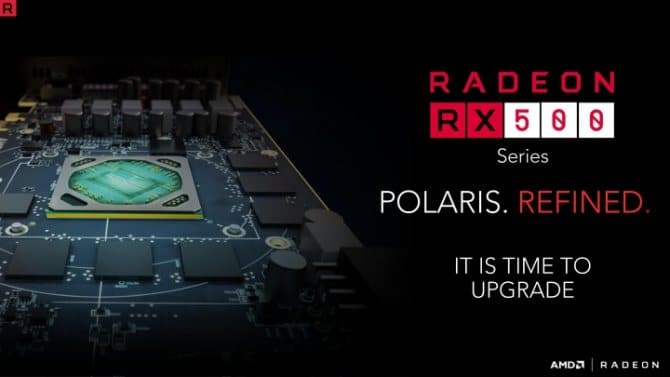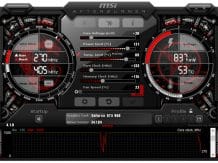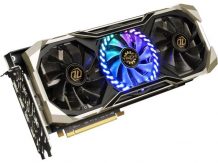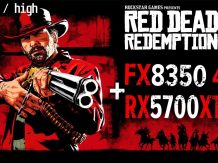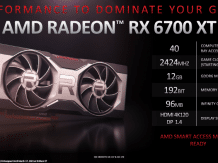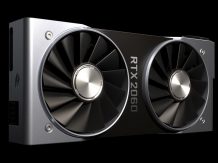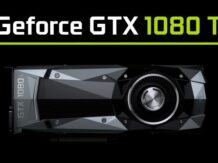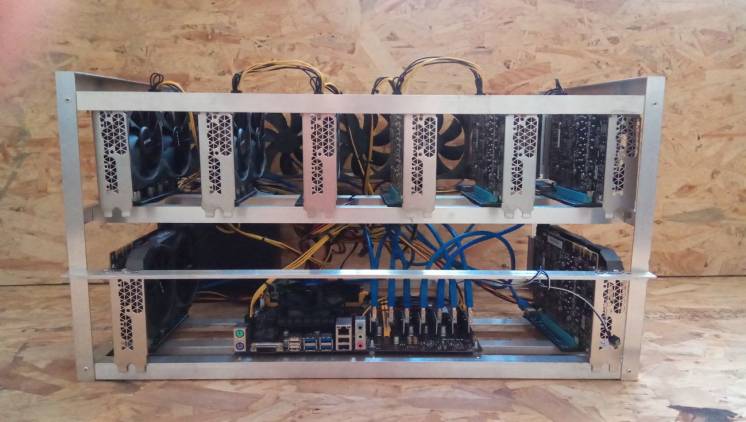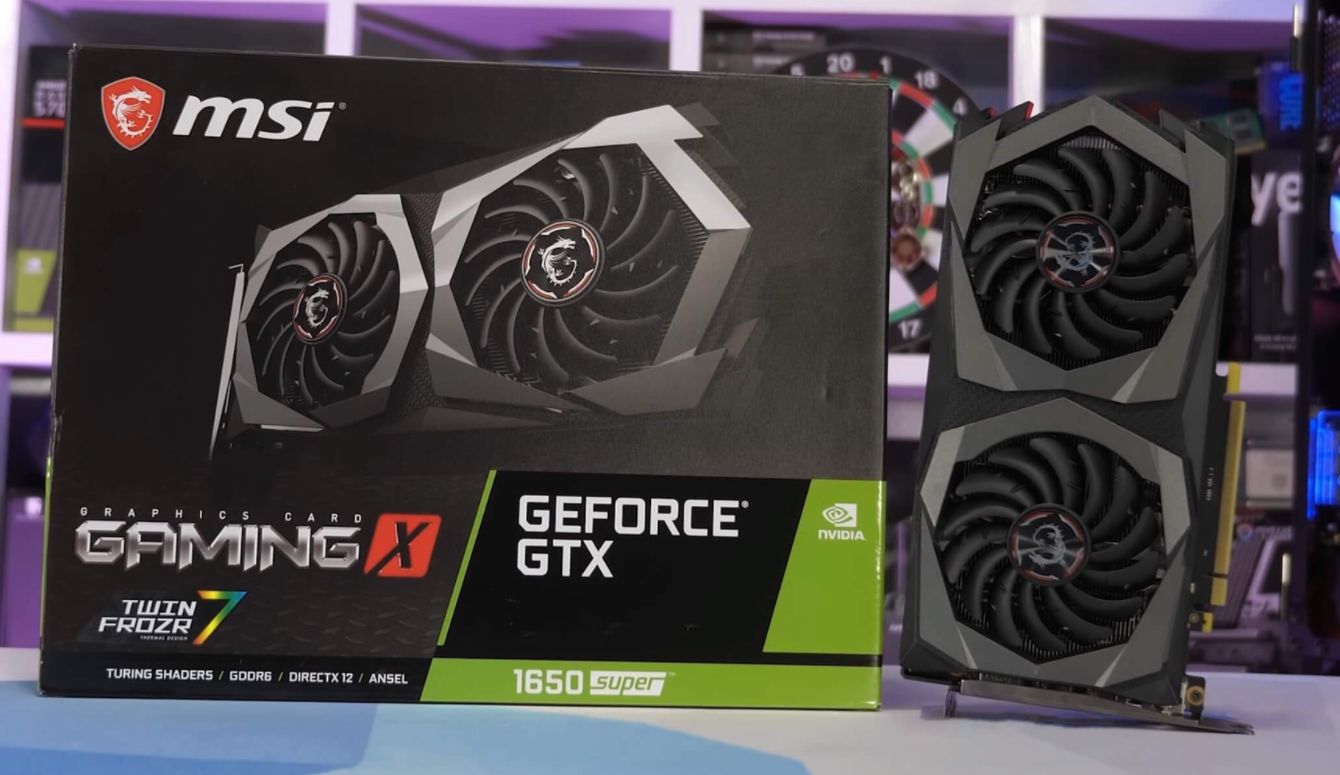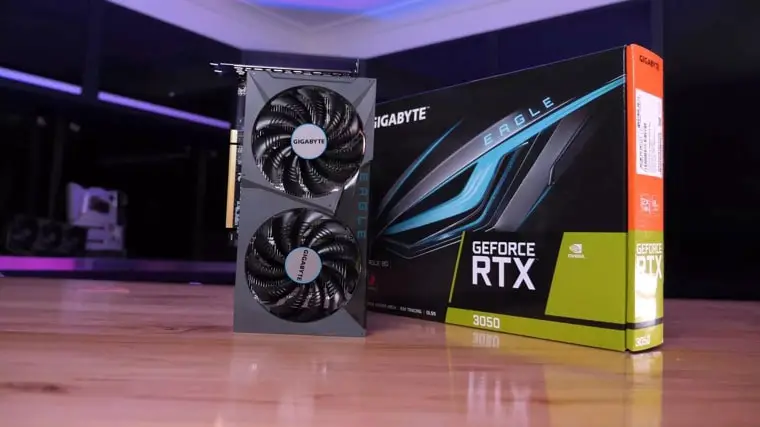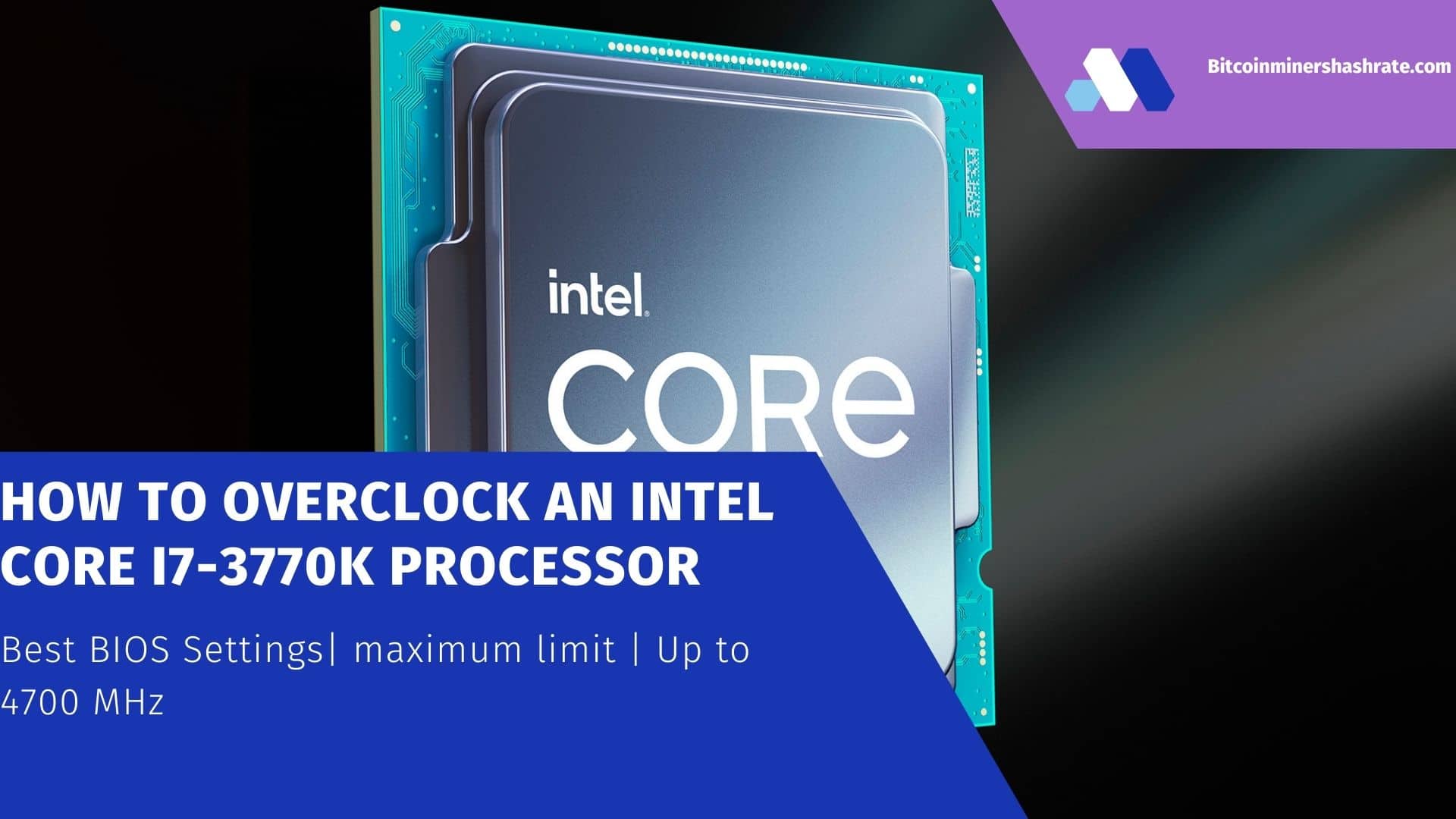How to ‘Increase/ Max/ Optimize’ ASUS RX 570 STRIX Gaming OC 4GB Mining: Overclock | Hashrate | Benchmark | Best Settings – AMD’s new 500-series graphics cards are based on the same basic Polaris microarchitecture as the previous generation 400. The emphasis is on improving performance, they are modified by manufacturing on a 14nm technical process, which allows them to run even faster.
The RX 570 replaces the RX 470 that came out last year in August. The overclocked version of the card is on par with the RX 480.
It is available in two versions with 4GB and 8GB. 4GB is meant as the standard amount of memory for the RX 570. AMD will also officially implement a number of software features that are used for the RX 470 through driver updates such as FreeSync 2.
How to Increase RX 570 STRIX Gaming 4GB Mining: Specifications
Specifications and comparison with the previous generation:
| AMD Radeon RX 570 | AMD Radeon RX 480 | AMD Radeon RX 470 | |
| Shaders | 2048 | 2304 | 2048 |
| Texture blocks | 128 | 144 | 128 |
| ROPs | 32 | 32 | 32 |
| Core frequency | 1168 MHz | 1120 MHz | 926 MHz |
| Increased frequency | 1244 MHz | 1266 MHz | 1206 MHz |
| Memory clock speed | 7Gbps | 7 / 8Gbps | 7Gbps |
| Memory bus | 256 pages | 256 pages | 256 pages |
| Memory | 4GB | 4/8 GB | 4GB |
| Number of transistors | 5.7 billion | 5.7 billion | 5.7 billion |
| Bandwidth (teraflops) | 5.1 | 5.8 | 4.9 |
| TDP | 150W | 150W | 120W |
| Technical process | 14нм FinFET | 14нм FinFET | 14nm |
| Architecture | GCN | GCN | GCN |
| GPU | Polaris 20 | Polaris 10 | Polaris 11 |
As you can see from the table, the RX 570 received a higher frequency than the RX 470. Thanks to this, the speed is 3% faster than its predecessor. But the power consumption of the video card is higher and now stands at 150 watts.
Second generation Polaris. Introducing the Radeon RX 570 using the ASUS ROG Strix video card as an example
At the moment, there is a situation with the total dominance of NVIDIA in the segment of top-end graphics solutions. AMD will not present its progressive Vega accelerators in any way. But a series of mid-range video cards based on the Polaris GPU has been developed. Their second generation is presented, and we begin to study new products.
The updated line of video cards includes four models: Radeon RX 580, Radeon RX 570, Radeon RX 560 and Radeon RX 550. They are direct successors to similar models of the RX400 series, in particular, the Radeon RX 580/570 are replacing the Radeon RX 480/470. We will talk about the changes in the new video cards in this review. Consider the ASUS Radeon RX 570, compare its potential with the Radeon RX 480 and GeForce GTX 1060.
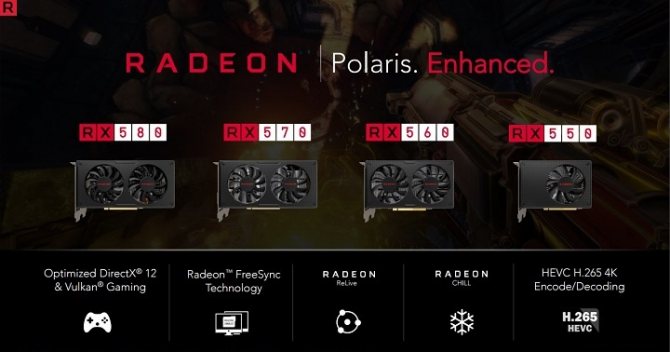
At the heart of the Radeon RX 580 and Radeon RX 570 is the Polaris 20 GPU, which has no major changes from the Polaris 10. This is an evolution of the AMD GCN architecture and its fourth implementation. The GPU has 36 Compute Units (CUs), which are organized into four Shader Engine arrays with their own geometry processing unit and rasterization units. Each CU operates 64 stream processors and four texture units. The general GPU capabilities are: 2304 stream processors, 144 texture units, and 32 ROP units.
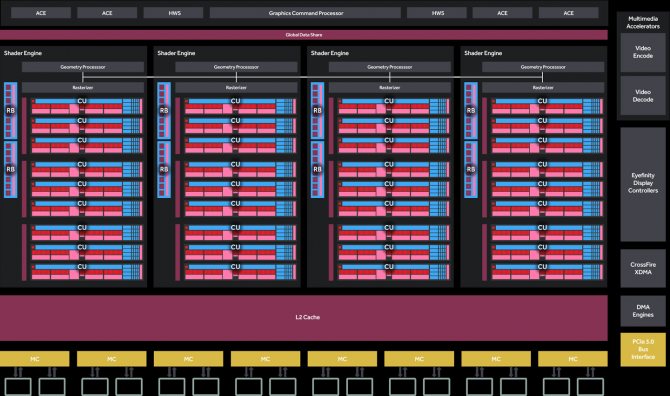
Not the largest number of computational units, if you think about GPU Grenada (Hawaii). However, Polaris has a number of advantages: increased processing speed of some shaders, asynchronous computation speed, improved geometry and tessellation processing units, and increased processor cache. Added color data compression, which increases the efficiency of data exchange with memory over a 256-bit bus. Thanks to the transition to a 14nm process technology, power consumption has been reduced and operating frequencies have been significantly increased.
The second generation Polaris has taken a step further in frequency. At the same time, the 14-nm process technology was preserved, but, perhaps, improvements within the technology itself and an increase in the percentage of yield of suitable crystals provided such an acceleration. Also, for new video cards, the power limits have been increased. Roughly speaking, the Radeon RX 580 and Radeon RX 570 are obtained through conventional overclocking.
The maximum performance of the Polaris 20 is provided by the Radeon RX 580 with full compute configurations. The base frequency of the GPU is set at 1257 MHz with the highest frequency value up to 1340 MHz. And this is a good acceleration against the background of 1120-1266 MHz in the Radeon RX 480. But the GDDR5 memory still operates at an effective data exchange rate of 8 GHz, the standard memory size is 8 GB.
The Radeon RX 570 operates on a GPU with 2048 stream processors active. The core frequencies are 1168-1244 MHz instead of 926-1206 MHz in the predecessor Radeon RX 470. It can be equipped with 4 or 8 GB GDDR5 memory modules with an increased frequency of 7 GHz.
The predecessor worked with memory at 6.6 GHz – Radeon RX 570
| Video adapter | Radeon RX 580 | Radeon RX 570 | Radeon RX 480 | Radeon RX 470 |
| Core | Polaris 20 | Polaris 20 | Polaris 10 | Polaris 10 |
| Number of transistors, mln.pcs | 5700 | 5700 | 5700 | 5700 |
| Process technology, nm | 14 | 14 | 14 | 14 |
| Core area, sq. mm | 232 | 232 | 232 | 232 |
| Number of stream processors | 2304 | 2048 | 2304 | 2048 |
| Number of texture units | 144 | 128 | 144 | 128 |
| Number of rendering units | 32 | 32 | 32 | 32 |
| Core frequency, MHz | 1257–1340 | 1168–1244 | 1120–1266 | 926–1206 |
| Memory bus, bit | 256 | 256 | 256 | 256 |
| Memory type | GDDR5 | GDDR5 | GDDR5 | GDDR5 |
| Memory frequency, MHz | 8000 | 7000 | 8000 | 6600 |
| Memory size, MB | 8192 | 4096 | 8192/4096 | 4096 |
| Supported DirectX Version | 12 | 12 | 12 | 12 |
| Interface | PCI-E 3.0 | PCI-E 3.0 | PCI-E 3.0 | PCI-E 3.0 |
| TDP level, W | 185 | to 185 | 150 | 120 |
The increase in frequencies led to an increase in heat generation. For the Radeon RX 580, a TDP of 185 watts is declared. For the Radeon RX 570, the official sources do not indicate specific values, but, most likely, the TDP is close to the level of the older card. At the same time, power consumption is reduced in modes that do not require maximum efficiency. This is due to the third state of memory, which previously worked only at the minimum or maximum value. When watching hardware accelerated video on the GPU or connecting a second monitor, the memory switched to performance mode, increasing the overall power consumption. Now it will operate in the third intermediate mode. For example, when streaming video from Youtube in 1080p, the new Radeon RX 580 will draw 14W and the old Radeon RX 480 38.8W.
These optimizations will maintain extremely low operating temperatures and noise levels in simple operating conditions. It should also be noted that AMD partners have gained more engineering freedom this time around. And instead of the reference versions with a frail “turbine” on store shelves, we will immediately see a wide range of various video cards with powerful coolers. Therefore, the temperature and noise characteristics will depend on each specific model.
Video cards are equipped with DisplayPort 1.3 HBR and DisplayPort 1.4 connectors, support HDR image output. Dedicated encoding / decoding unit provides support for H.264 and HEVC video up to 4K resolution. Thanks to this block, you can record gameplay on the fly or stream without sacrificing gaming performance. Corresponding video capture and recording functions are built into AMD ReLive software.
The AMD ReLive package includes the WattMan application, which gives all the possibilities for fine control of the performance parameters of the video card and its overclocking. So all the possibilities are available to users without the need to resort to additional utilities.
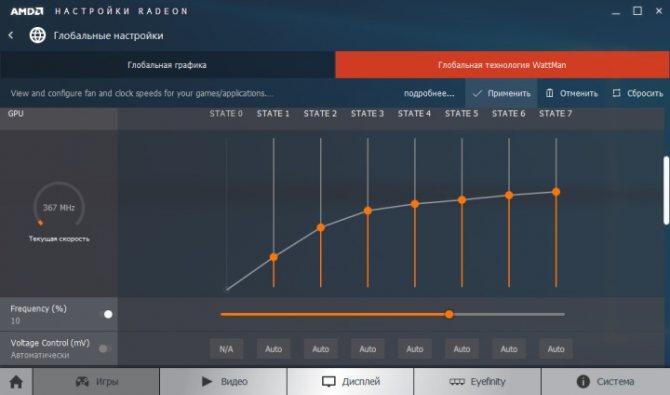
Among the new software features, it is worth noting Radeon Chill – a special intelligent energy-saving technology for AMD Radeon graphics cards. Radeon Chill can control frequencies, lowering them slightly at low player activity and load on the GPU, and at the moments of maximum activity, raising them to the limit. This will lower overall power consumption and heat, allowing the graphics card to operate in a more comfortable environment. Also, Radeon Chill reduces frame output delays.
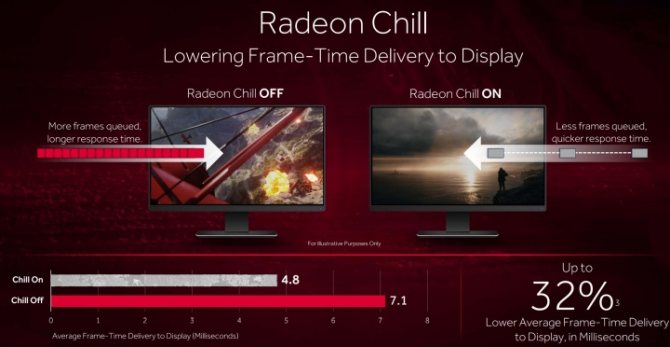
Radeon Chill technology is relevant to esports gaming. For example, in Dota 2, you will get not 200 fps, but a lower value, but with lower latencies and higher response times.
If we talk about the quality of the output image, then we should also mention AMD FreeSync 2. This new technology will provide synchronization of the output frames when working with HDR monitors. An improved HDR image transmission pipeline reduces input lag and improves screen smoothness without tearing.
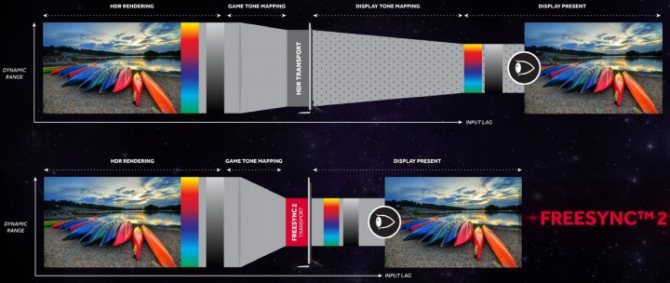
The Radeon RX 580 is marketed as an option for smooth HD gameplay with the ability to use higher resolutions. Radeon RX 570 is positioned as a productive solution for the mass Full HD format.
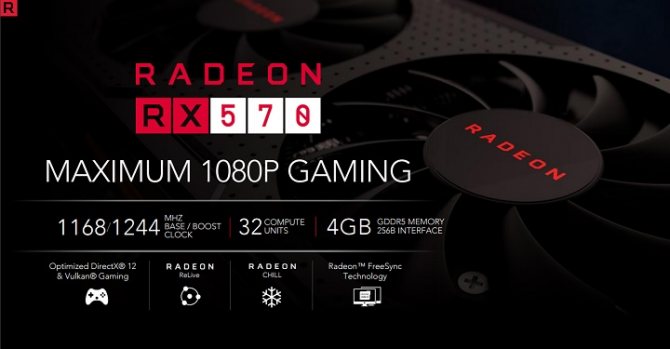
Our acquaintance with the new series will begin with the Radeon RX 570. Let’s see what these video cards are capable of by examining the capabilities of the ASUS ROG Strix model.
How To Maximize: ASUS ROG Strix Radeon RX 570 O4G Gaming OC Edition
ASUS ROG-STRIX-RX570-O4G-GAMING graphics card comes in a medium box.
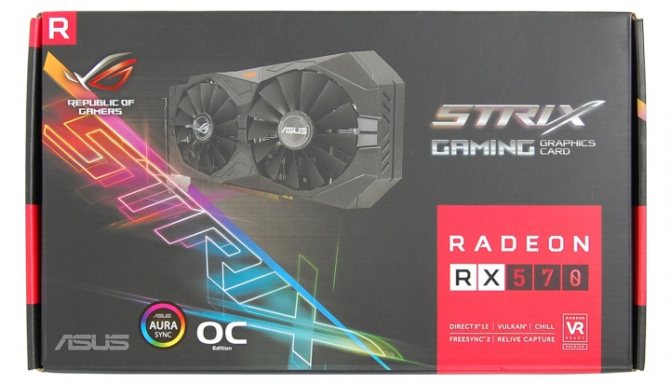
Outwardly, we have a complete copy of ASUS ROG Strix Radeon RX 470. A card of the same dimensions and with the same cooling system. Total length 24 cm.
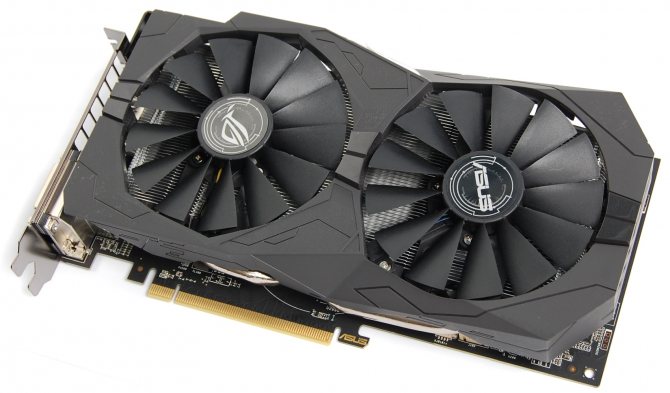
The cooler is larger than the board; two large fans are used. Everything is designed in black colors.
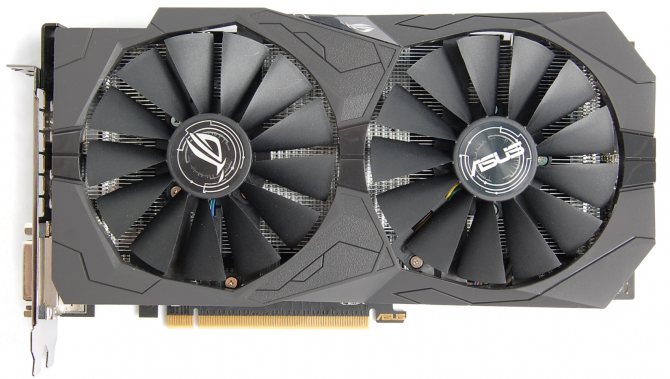
The austere look is complemented by an illuminated logo at the end.
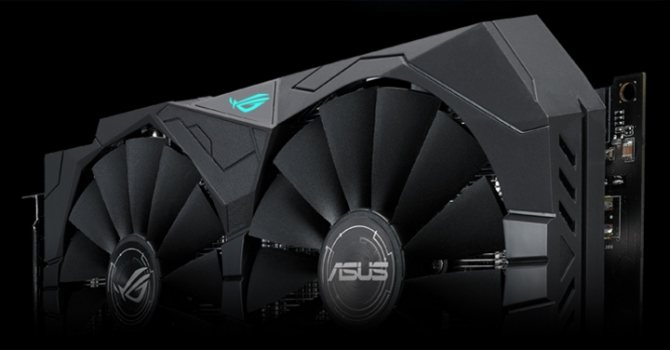
In the corner there is an eight-pin power connector, which is unfolded with a latch upward. One of the screws on the cooler is protected by a warranty seal, which prevents disassembly.
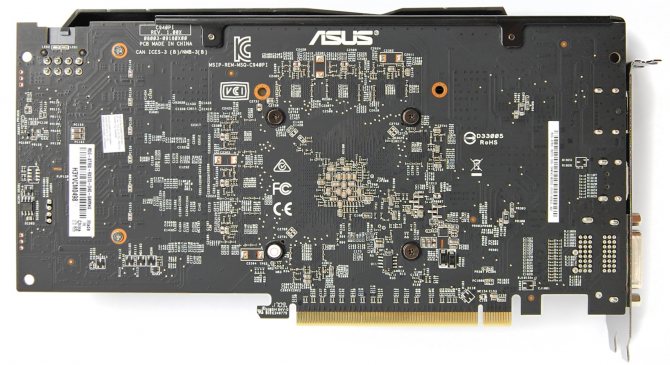
The rear panel has four interface connectors: DisplayPort, HDMI and two DVI.
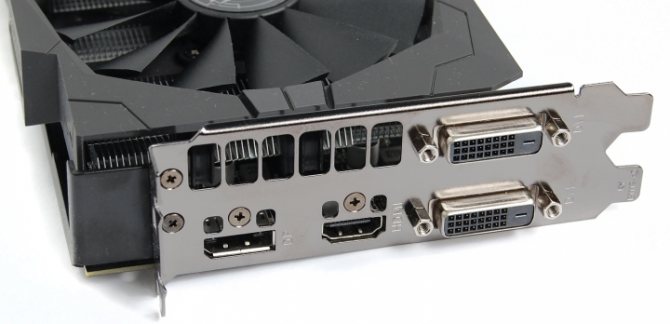
There are no changes in the design of the cooler as compared to the ASUS Radeon RX 470. Two thick heat pipes with a diameter of 8 mm pass through the base and penetrate the heatsink fins.
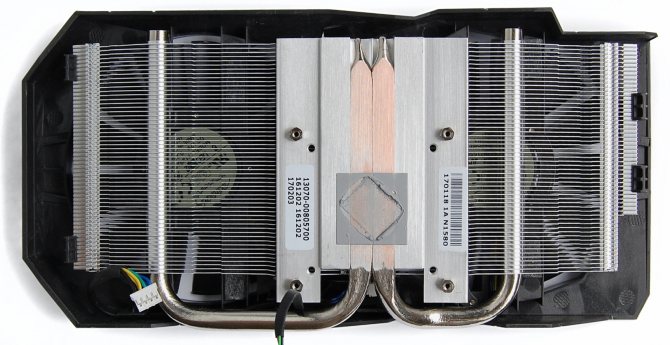
Direct contact of the tubes with the crystal surface is realized.
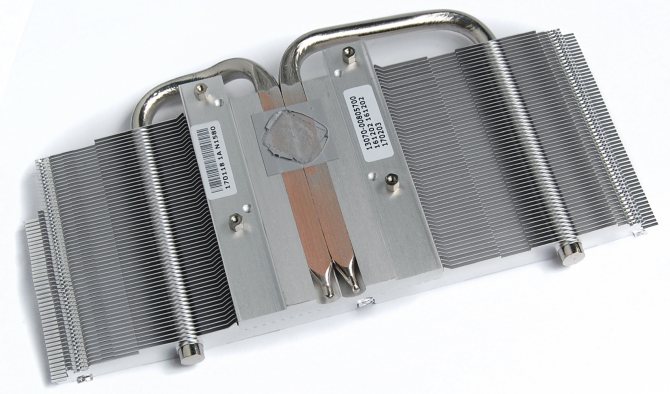
The radiator does not have any mounting frames and complex structures on the front side. The casing with the fans clings with latches to the edges of the plates.
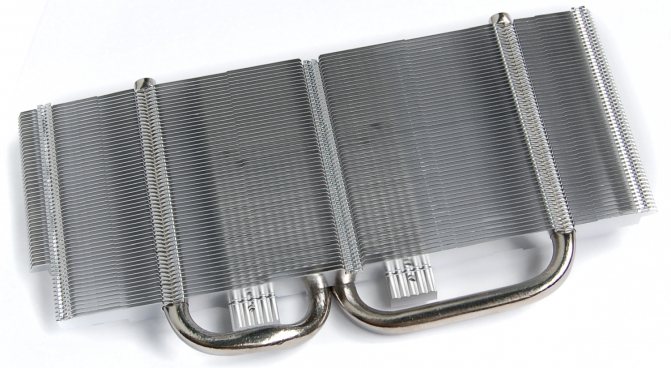
The power supply transistors have their own finned heatsink.
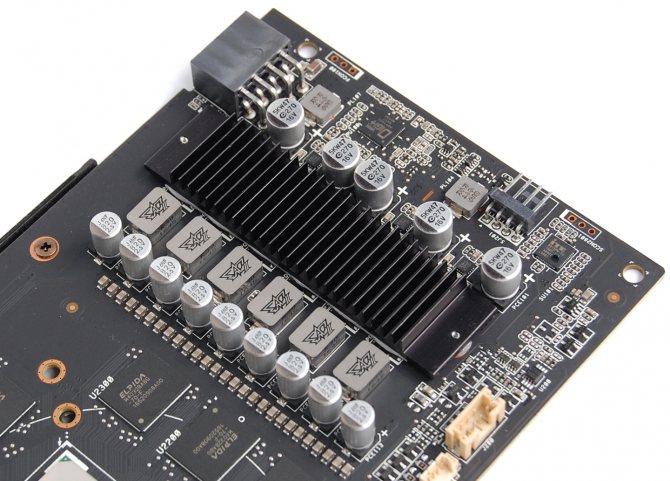
The entire structure is blown by a pair of Everflow T129215SM fans of standard size 100 (the diameter of the blades is slightly smaller).
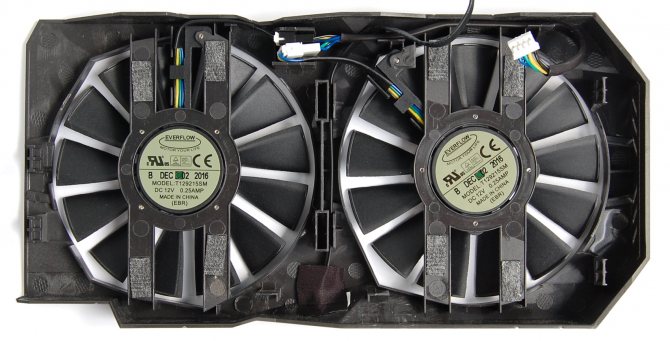
But the printed circuit board is noticeably different from the Radeon RX 470. In the new ASUS graphics card, the power supply unit is located to the right of the chip. The number of phases in the GPU power supply system has been increased to six.
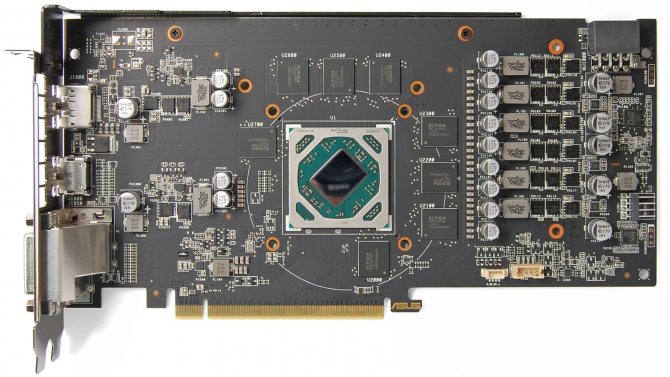
The graphic crystal is surrounded by a large frame. The memory is recruited with Elpida W4032BABG-70-F microcircuits.
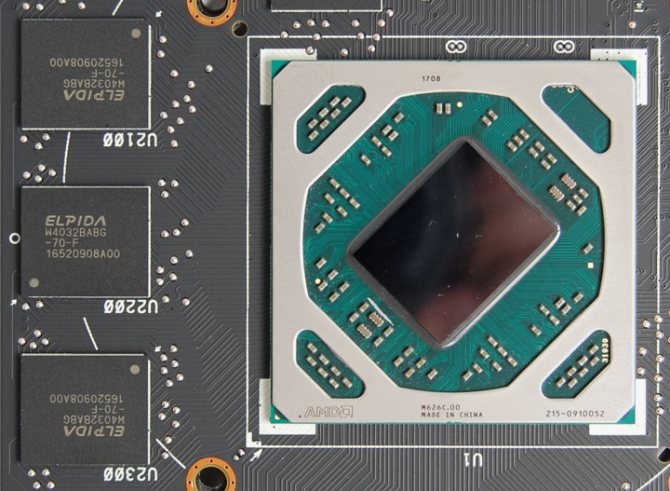
If the regular version of the Radeon RX 570 has an upper core frequency of 1244 MHz, then ASUS ROG-STRIX-RX570-O4G-GAMING operates at 1300 MHz. Effective memory frequency 7000 MHz.
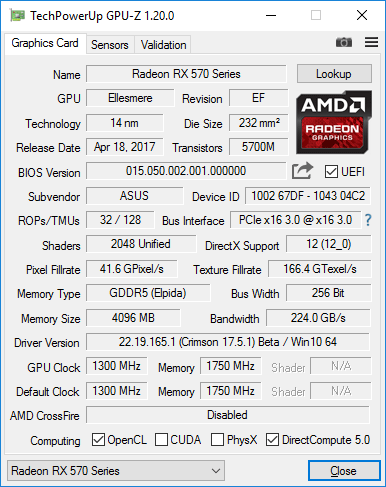
As with all models in the Gaming series, three frequency profiles are supported. The initial settings correspond to the Gaming Mode, there is also OC Mode with a core frequency of 1310 MHz. Silent Mode offers some frequency cut to reduce noise.
Under any gaming load, ASUS demonstrates a stable core frequency of 1300 MHz. This is an excellent result, because even the top-end versions of the old Radeon RX 470/480 sometimes showed floating frequencies. But the temperature and noise characteristics are strange. At one time, the ASUS ROG Strix Radeon RX 470 video adapter showed a good combination of low operating temperatures with a low fan speed. In this case, everything is somewhat different. The first gaming tests showed that the maximum fan speed barely reaches 1,700 rpm at core temperatures up to 66 ° C. But after a good warm-up, the fan speed starts to increase in the same applications. As a result, the ASUS ROG Strix Radeon RX 570 video card showed 1900 rpm, sometimes 2000 rpm at peak times, which is more than 70% of the maximum speed. In this case, the noise can be assessed as moderate. A smooth change in speed and its periodic reduction reduces the overall hum.
In terms of maximum temperatures, some applications easily warmed up the core and up to 70 ° C at an indoor temperature of 21 ° C. That is, against the background of the Radeon RX 470 with the same cooling, we see a significantly increased heat dissipation and noise. And the mode of operation of the cooling system seriously depends on each specific application: some games warm up the video card faster and stronger, some weaker, allowing you to work in a quieter mode. Temperatures of 66–70 ° C are still not high for such a GPU. So, with manual settings, you can achieve the optimal balance with a more comfortable noise level and without a serious increase in operating temperatures.
The second generation Polaris gave hope for increased overclocking potential. And then ASUS lived up to expectations. The core was overclocked to 1445 MHz, which was unattainable for the GTX 470/480 series. In particular, the already mentioned ASUS ROG Strix Radeon RX 470 overcame only 1350 MHz. Memory overclocking also exceeded those of its predecessors. The new ASUS model has overcome the 7800 MHz line. Higher core and memory frequencies resulted in artifacts or decreased stability.
It is noteworthy that such overclocking was realized without significant acceleration of the fans. Almost all gaming tests were passed with the fan speed fixed at 69% of the maximum (just under 1900 rpm). The speed stabilization proved to be very effective for improving cooling, and as a result the core only warmed up to 71 ° C. But the general background noise has increased. At variable rotational speed with peak values of up to 2000 rpm and higher, the video card worked quieter!
ASUS will replace the regular Radeon RX 570 in our tests. Judging by other reviews, these video cards demonstrate a high frequency level. If there are drawdowns relative to the declared upper limit of 1244 MHz, then they are small. Therefore, we chose the option with fixing the core frequency at 1230 MHz.
For a complete picture, we need to compare with the Radeon RX 470. The old video card demonstrates a more serious frequency spread, but we decided to stay at 1175 MHz, relying on the average frequency monitoring readings in our first Radeon RX 470 tests. The memory frequency was also reduced to the recommended level in 6600 MHz.
Characteristics of the tested video cards
Let’s compare the Radeon RX 570 with the Radeon RX 470 and older solutions such as the Radeon RX 480 8GB and GeForce GTX 1060 6GB. All variants of the Radeon RX 470/570 are obtained by changing the frequencies of the ASUS ROG-STRIX-RX570-O4G-GAMING. Radeon RX 480 replaces ASUS ROG STRIX-RX480-O8G-GAMING while stabilizing the core frequency at 1250 MHz. NVIDIA’s competitor is the Inno3D iChill GeForce GTX 1060.
| Video adapter | Radeon RX 480 | ASUS ROG Strix RX 570 O4G | Radeon RX 570 | Radeon RX 470 | GeForce GTX 1060 6GB |
| Core | Polaris 10 | Polaris 20 | Polaris 20 | Polaris 10 | GP106 |
| Number of transistors, mln.pcs | 5700 | 5700 | 5700 | 5700 | 4400 |
| Process technology, nm | 14 | 14 | 14 | 14 | 16 |
| Core area, sq. mm | 232 | 232 | 232 | 232 | 200 |
| Number of stream processors | 2304 | 2048 | 2048 | 2048 | 1280 |
| Number of texture units | 144 | 128 | 128 | 128 | 80 |
| Number of rendering units | 32 | 32 | 32 | 32 | 48 |
| Core frequency, MHz | 1120–1266 | 1300 | 1168–1244 | 926–1206 | 1506–1708 |
| Memory bus, bit | 256 | 256 | 256 | 256 | 192 |
| Memory type | GDDR5 | GDDR5 | GDDR5 | GDDR5 | GDDR5 |
| Memory frequency, MHz | 8000 | 7000 | 7000 | 6600 | 8000 |
| Memory size, MB | 8192 | 4096 | 4096 | 4096 | 6144 |
| Supported DirectX Version | 12 | 12 | 12 | 12 | 12 |
| Interface | PCI-E 3.0 | PCI-E 3.0 | PCI-E 3.0 | PCI-E 3.0 | PCI-E 3.0 |
| Power, W | 150 | n / a | to 185 | 120 | 120 |
Test bench
The test bench configuration is as follows:
- processor: Intel Core i7-6950X (3, [email protected], 1 GHz);
- cooler: Noctua NH-D15 (two NF-A15 PWM fans, 140 mm, 1300 rpm);
- motherboard: MSI X99S MPower (Intel X99);
- memory: G.Skill F4-3200C14Q-32GTZ (4 × 8 GB, DDR4-3200, CL14-14-14-35);
- system drive: Intel SSD 520 Series 240GB (240 GB, SATA 6Gb / s);
- additional disk: Hitachi HDS721010CLA332 (1 TB, SATA 3Gb / s, 7200 rpm);
- power supply unit: Seasonic SS-750KM (750 W);
- monitor: ASUS PB278Q (2560×1440, 27 ″);
- operating system: Windows 10 Pro x64;
- Radeon driver: AMD Crimson Edition 17.5.1;
- GeForce driver: NVIDIA GeForce 382.05.
How to Optimize: Testing technique
The tests were carried out in a resolution of 1920 × 1080 at the maximum or close to this level graphics settings.
Battlefield 1
Testing was carried out by replaying a small game episode at the beginning of the Cape Helles mission, where the assault on Gallipoli is played out. Fighters land under heavy artillery fire, and with heavy explosions, performance sags more than in most other game moments. Seven repetitions were performed.
Selected Ultra-quality, disabled video memory limitation. Tested in DirectX 11 using Fraps.
Deus Ex: Mankind Divided
For testing, the built-in bechnmark was used, which was run at least seven times.
The selected quality profile is Very High with additional upscaling to Ultra quality of textures and anisotropic filtering. All tests were carried out in DirectX 12 mode.
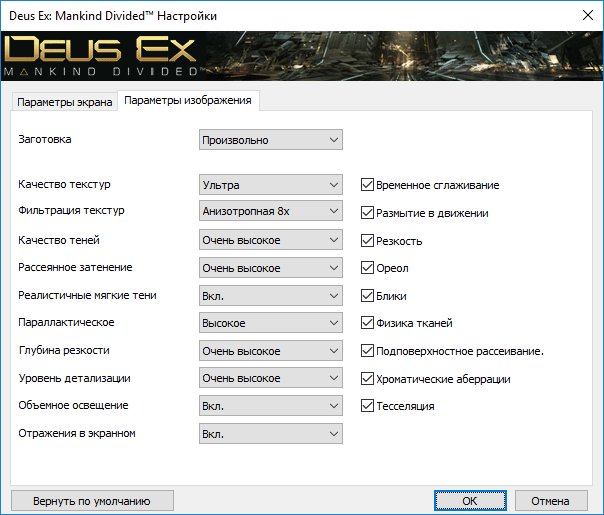
Fallout 4
Testing was done with Fraps right after leaving the hideout at the start of the game. We took a short walk through the surroundings with an abundance of vegetation and rich rays of light. Scenes with this environment will cause the most noticeable performance degradations. The procedure is shown below.
The profile of the highest graphics quality is selected, in addition, HBAO + shading is enabled.
Gears of War 4
The built-in gaming benchmark was used, which was run seven times.
The maximum graphics quality is set to Ultra, additional DirectX 12 features are active (Async Compute, etc.).
Grand Theft Auto 5
The built-in benchmark was used for testing. Five repetitions. For a comprehensive assessment, the average fps was calculated based on the results of all test scenes. The minimum fps was measured using Fraps based on the results of a full benchmark run.
All basic graphics settings are at the maximum, additional parameters are active – the distance for loading detailed objects (Extended Distance Scaling) and the item “length of shadows” (Extended Shadows Distance) + 100% to the base level. MSAA 2x anti-aliasing enabled.
Mass Effect: Andromeda
A short run was made during the very first landing on the planet. Frame rates were measured by Fraps.
Ultra quality presets selected, grain and chromatic aberration effects active.
The Witcher 3: Wild Hunt
Testing was done using Fraps. Fps was measured during a trip on the road to the village of Bely Sad. At least six repetitions and an additional test session for the simplest graphics mode.
At maximum graphics settings, all post-processing effects and HBAO + shading are active. Only HairWorks is disabled.
Tom Clancy’s Ghost Recon: Wildlands
For testing, the built-in gaming benchmark was used, which was run seven times.
Very High quality presets are selected.
Tom Clancy’s The Division
The built-in benchmark was run at least seven times for each mode.
The highest quality profile is selected. Additionally, those parameters that were not set to this level initially (quality of reflections, background shading HBAO +, detail) were increased to the maximum.
Watch Dogs 2
Testing in this game is slightly different from previous reviews. In this case, a walk was performed in the Palo Alto area, jogging through the streets and a nearby grove of trees and dense grass.
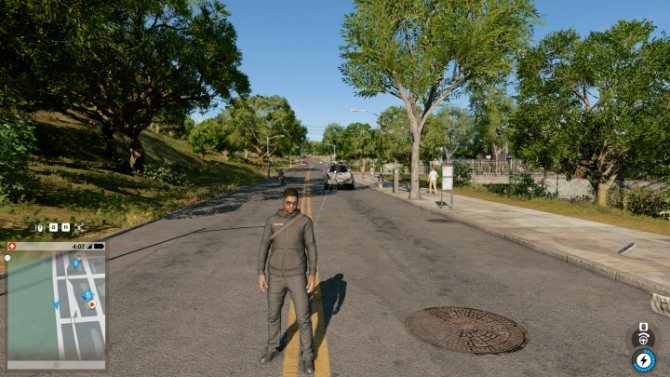
The profile is set to the highest quality graphics Ultra at a resolution of 2560 × 1440. For a higher resolution, similar graphics settings were combined with the activation of the “Temporal filtering” parameter.
3DMark Fire Strike
Fire Strike benchmark from the latest 3DMark benchmark suite. Tested at 1920 × 1080 and 2560 × 1440.
3DMark Time Spy
New benchmark for DirectX 12, launched with default settings.
Energy consumption
The results are given according to the results of measurements in five appendices:
- Deus Ex: Mankind Divided;
- Gears of War 4;
- Grand Theft Auto 5;
- Tom Clancy’s Ghost Recon: Wildlands;
- Tom Clancy’s The Division.
The peak values during each run were taken into account, from which the average value was calculated from the results of testing in both resolutions, and then the overall average value was calculated. The data were taken using a Cost Control 3000 instrument.
Test results
Battlefield 1
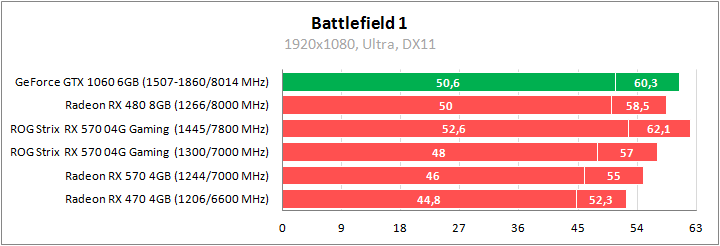
No more than 5% difference between Radeon RX 470 and Radeon RX 570 in Battlefield 1. Factory overclocking gives ASUS an additional 4% advantage. Overclocking allows you to confidently bypass the Radeon RX 480 and GeForce GTX 1060 at standard frequencies.
Deus Ex: Mankind Divided
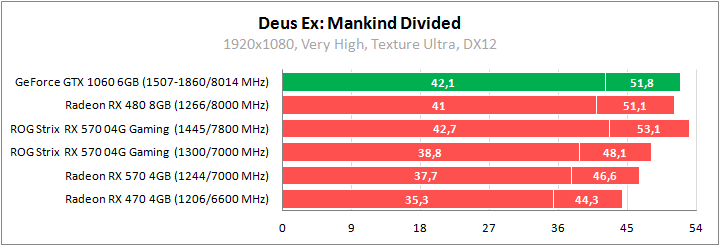
The simple Radeon RX 570 is 5-7% better than its predecessor in Mankind Divided, 9% behind the Radeon RX 480. Overclocking allows you to catch up and overtake the older video adapter. Also, increasing the frequencies to the maximum allows you to slightly bypass the GeForce GTX 1060.
Fallout 4
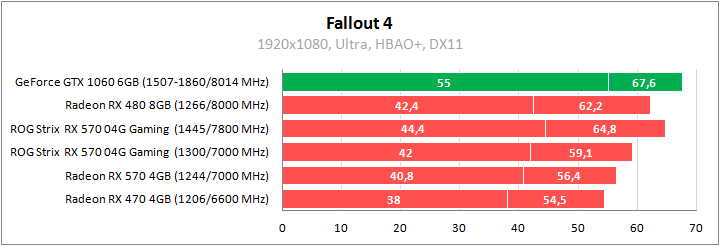
The usual difference between Radeon RX 470 and Radeon RX 570 in Fallout 4. ASUS at factory frequencies already shows a slight lag behind the Radeon RX 480, and after overclocking it goes ahead. The gap with the GeForce GTX 1060 is more significant, and it is no longer possible to catch up with the competitor from NVIDIA.
Gears of War 4
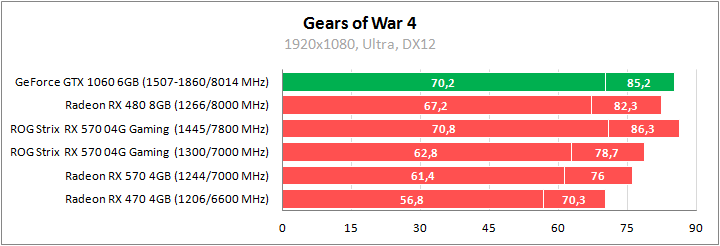

The Radeon RX 570 wins up to 8% over its predecessor in Gears of War 4. ASUS ROG Strix has an additional advantage of about 3%, an increase from overclocking 10-12%. The increase in frequencies allows you to bypass the Radeon RX 480 by a few percent and compare with the GeForce GTX 1060.
Grand Theft Auto 5
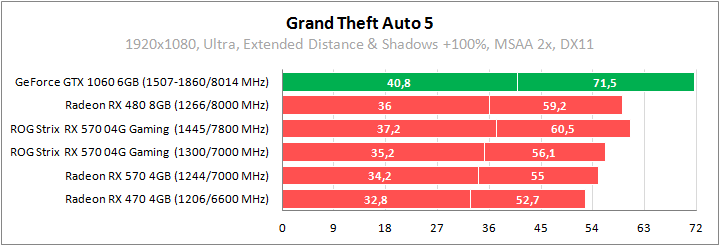
The GeForce GTX 1060 demonstrates an unattainable level of performance in GTA 5. There is little difference between AMD representatives, so the Radeon RX 570 initially loses to the Radeon RX 480 by about 7%, which is easily compensated for by increasing the frequencies to 1445/7800 MHz.
Mass Effect: Andromeda
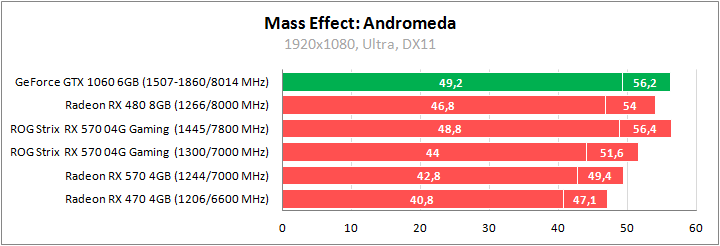
Radeon RX 570 is 5% faster than its predecessor. ASUS outperforms its brother by 4%, and overclocking provides acceleration at the level of 10%. The initial 9% lag behind the Radeon RX 480 is easily covered by overclocking. It is not possible to bypass the GeForce GTX 1060, increasing the frequencies allows you to reach parity with this competitor, which operates at standard frequencies.
The Witcher 3: Wild Hunt
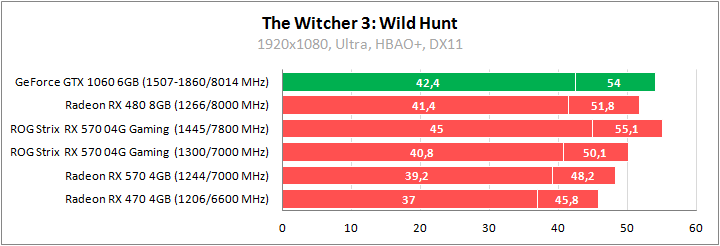
In The Witcher 3, the advantage over its predecessor is more than 5%. ASUS ROG Strix at the initial frequencies loses to the Radeon RX 480 by only 3%, which is easily compensated by overclocking, bringing the review hero to a higher level. The maximum frequencies allow you to overtake the GeForce GTX 1060.
Tom Clancy’s Ghost Recon: Wildlands
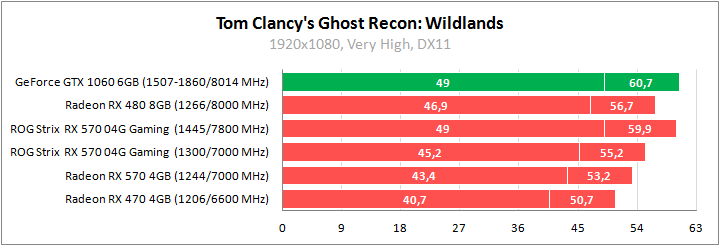
A familiar situation in this game. The predecessor has a gain of up to 6%, ASUS has an additional advantage of 4% and an increase of 8-12% from overclocking. At maximum frequencies, ASUS is 5% faster than the Radeon RX 480, while being as close as possible to the GeForce GTX 1060.
Tom Clancy’s The Division
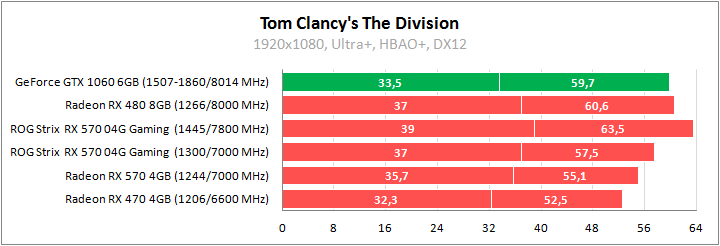
In The Division, when moving to DirectX 12, the advantage of the Radeon RX 480 over the GeForce GTX 1060 appeared, and this is the only such example in our list of tests. Radeon RX 570 is inferior to Radeon RX 480 by up to 10% and outperforms Radeon RX 470 by 15%. Already at the factory frequencies, ASUS is as close as possible to the Radeon RX 480 and GeForce GTX 1060, easily overtaking them after increasing the frequencies to the maximum.
Watch Dogs 2
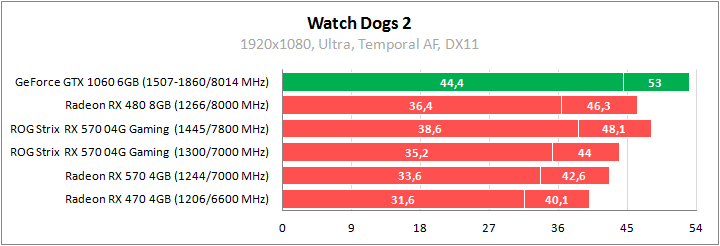
The Radeon RX 570 wins about 6% over the Radeon RX 470 in Watch Dogs 2, the lag behind the Radeon RX 480 is less than 9%. ASUS at the initial frequencies is very close to the performance of the older AMD card, easily outperforming it after overclocking. GeForce GTX 1060 leads with a good lead over the rest of the participants
3DMark Fire Strike
In this test, the usual 5% difference is observed between the Radeon RX 570 and the Radeon RX 470. ASUS is 3-4% faster than its fellow in the series, the gain from overclocking is 10-11%. Overclocking allows you to bypass the Radeon RX 480 and GeForce GTX 1060 in a simpler mode. The latter competitor demonstrates the greatest advantage over AMD solutions in high definition.
3DMark Time Spy
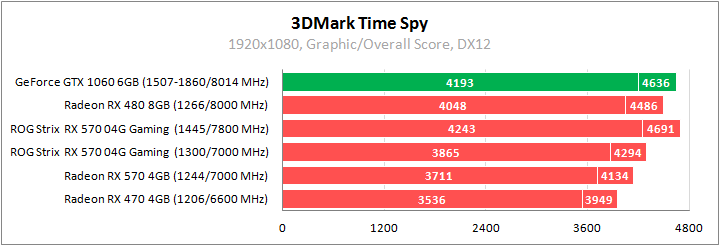
In the Time Spy benchmark for DirectX 12, the alignment of forces is similar. Radeon RX 570 beats its predecessor by 5%. ASUS is faster than the old man by 9.3% while lagging behind the Radeon RX 480 less than 5%. Overclocking allows you to reach the level of the GeForce GTX 1060.
Energy consumption

Our example of Radeon RX 570, even when lowering frequencies to the standard level, showed higher consumption compared to a system based on Radeon RX 480. Overclocking also noticeably affects the bottom line, increasing them. As for the slight difference between our analogue Radeon RX 470 and Radeon RX 480, the reason may be that the younger old man was also replaced by the Radeon RX 570. Our first comparisons of Radeon RX 470/480 series video cards showed that the younger solution is much better in terms of efficiency the highest card.
conclusions
The new graphics cards based on Polaris 20 are obtained by simply increasing the frequencies. At the same time, the overall frequency potential has also increased, which will allow achieving higher overclocking and increased performance levels. So buyers of the new Radeon RX 570/580 will get a definite advantage over the older Radeon RX 470/480 video cards, although not very large. In the case of the Radeon RX 470 and Radeon RX 570, we can talk about the gain of the new version by 5% or more. Such new items will compete more successfully with the GeForce GTX 1060 in versions for 3 and 6 GB. Now the confrontation in the middle price segment will become fiercer. Our testing shows that even the younger Radeon RX 570 card looks quite decent against the background of the more powerful GeForce GTX 1060 and Radeon RX 480, reaching their level after overclocking. But along with the increase in frequencies, heat dissipation and power consumption increased. Therefore, new solutions from AMD in terms of temperature and noise characteristics may turn out to be worse than previous models. However, it still depends on the capabilities of each specific video card. Based on user reviews and feedback, you should be able to pick up a quiet and cool version of the Radeon RX 570/580.
The reviewed video card ASUS ROG Strix Radeon RX 570 O4G Gaming OC Edition (ROG-STRIX-RX570-O4G-GAMING) initially runs at increased frequencies, which provides a few additional percent of the performance of relatively simple versions of the Radeon RX 570 and a more significant lead over the Radeon RX 470. Further overclocking allows you to reach the performance level of the Radeon RX 480 and the older version of the GeForce GTX 1060. ASUS’s cooling looks serious, but in reality the card turns out to be not the quietest. High fan speeds are associated with a certain amount of noise, albeit without obvious discomfort. The cooling that performed well on the Radeon RX 470 is less effective when combined with the hotter Polaris 20 GPU on the Radeon RX 570. that the heating and fan speed are highly dependent on each specific application: some games quickly warm up the card, while others allow them to maintain a low noise level for a rather long time. In such a situation, the implementation of overclocking will require a delicate approach in selecting the optimal fan speed, or you will have to put up with a certain noise level. As a result, ASUS ROG-STRIX-RX570-O4G-GAMING can be called a worthy candidate for a purchase, but overclocking enthusiasts may look for more interesting options.
We will talk about the capabilities of the Radeon RX 580 in nominal value and in overclocking in the following reviews. Stay with us!
Manufacturers
There are a huge number of manufacturers on the video card market. Here is a list of some of the more well-known companies that are popular with users:
- ASUS
- Gigabyte
- MSI
- Sapphire
- PowerColor
Almost each of the publishers raises the factory frequencies, creates its own appearance, uses different and in different quantities of cooling coolers. The sizes of video cards also differ from each other.
Sapphire RX 570 Pulse
The manufacturer’s video card operates at a core frequency of 1284 MHz and a memory frequency of 1750 MHz. The card has a completely new PCB design with stronger VRM installation. Powered by one 8-pin PCIe connector and a simple cooling system from two coolers, which emphasize the low noise level. The cooler is equipped with dense aluminum heat pipes that are cooled by the same fans.
Gigabyte Radeon RX 570 Aorus and RX 570 Gaming
Both video cards have 4GB of memory onboard, and are equipped with a cooling system consisting of two WindForce fans with their own unique design.
Performance comparison and test results
To help you make an informed choice, the graphics card was tested at NICS Computer Supermarket 09/20/2019. The test results are clearly displayed in a diagram and two tables.
The diagram shows the test results for the selected article (highlighted in red) and 9 more products with similar prices. Percentage rates indicate approaching the highest recorded result. That is, if your choice fell on a product with an indicator of 50%, this means that there is an analogue 2 times faster (with an indicator of 100%), but, of course, at a completely different price.
The chart is followed by a table with similar indicators for the 10 champion products in their category, in the form of a TOP10 rating.
Using this table, it is easy to determine the place of a video card in the general “table of ranks”, and also to estimate how expensive it will be to try to improve performance. The selected product is also highlighted with a red line.
The last table is just a list of test results. From these, the percentage rating is calculated, which was used in the first two reports. By clicking on the name of the test, you can go to a pivot table with indicators of all products in the category, including those out of stock at the moment.
For comparisons, only products that are currently in stock are used.
If you decide to approach the choice of new equipment seriously and with full responsibility, the full rating Rating of gaming video cards, Comparison of video cards, including the results of testing goods that are not currently in stock, will provide invaluable help.
Rating of gaming video cards, Comparison of video cards
percentage of the maximum recorded results for all tests
Sergey Plotnikov
3DNews laboratory has already compared the Radeon RX 570 with the GeForce GTX 1060 3 GB. The test results clearly demonstrate the advantage of the AMD video card over the opponent. In some cases, the Radeon RX 570 is affected by the presence of four gigabytes of video memory – this amount of RAM is enough for most computer games in Full HD resolution. At the same time, the junior graphics chip Polaris 20 XL does not differ that much from the Polaris 20 XTX, which is used in the Radeon RX 580. Therefore, it is quite possible to eliminate the slight difference in performance by overclocking the GPU and memory. We decided to check this using a custom model GIGABYTE AORUS Radeon RX 570 4G.
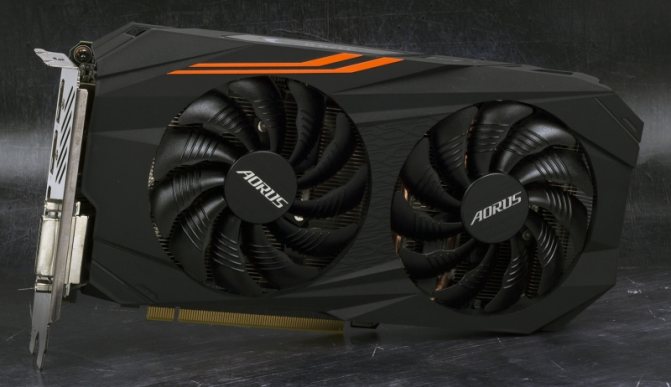
GIGABYTE AORUS Radeon RX 570 4G
Benchmark results
3DMark 11 Extreme
| Card name | GTX 1070 | GTX 1060 | RX 570 | RX 480 |
| Number of points scored | 7856 | 5851 | 4420 | 4638 |
3DMark 11 is a synthetic graphics benchmark that makes a score based on the performance of a DirectX 11 capable GPU. The higher the score, the better.
Unigine Valley 1080p
| Card name | GTX 1070 | GTX 1060 | RX 570 | RX 480 |
| Number of frames | 88.1 | 66.2 | 49.8 | 52 |
Unigine Valley appears to be the same synthetic graphics benchmark. But instead of points, it displays average frames per second data. The benchmark repeats the results of 3DMark 11, with a similar performance arrangement.
The card performs well in both benchmarks. In addition to the most graphically demanding games, it is capable of delivering an average stable 60 FPS at 1080p.
Unigine Valley 1440p
| Card name | GTX 1070 | GTX 1060 | RX 570 | RX 480 |
| Number of frames | 53.2 | 39.6 | 30.9 | 32.2 |
AMD cards cross the 30fps threshold, but not by much. There is no confidence in stable performance at this resolution.
SteamVR Perfomance Test
| Card name | GTX 1070 | GTX 1060 | RX 570 | RX 480 |
| Number of points | 10729 | 9756 | 8504 | 8617 |
RX 480 and RX 570 are VR compatible cards. They show their capabilities well in this environment. Their results are almost the same, although they are inferior to solutions from Nvidia.
Payback period RX 570
The concept of payback is increasingly conditional in nature, because it directly depends on the rate of the extracted currency. In the case of AMD’s 500 line, we are almost always talking about the Ethereum course. The second important factor is the purchase price of video cards, which also greatly increases during the growth of the cryptocurrency. The lower the cost of purchasing a farm, the shorter the payback period will be.
The third factor that has a direct impact on the payback period is power. Nevertheless, even in the worst case, with the BIOS firmware, you can get stable operation at 28 MH / s from the RX 570. If you are lucky with the card and you can find Samsung memory on it, then you can safely add at least 2 MH / s with stable operation 24 by 7. With an average price of cards, the payback in most cases will be from 70 to 80% per year.
If you add to this the preservation of the currency and its sale at the peak of the increase in the rate, you can achieve 100% payback in 12 months. Given the current conditions and the complexity of mining, this is an incredibly profitable prospect.





